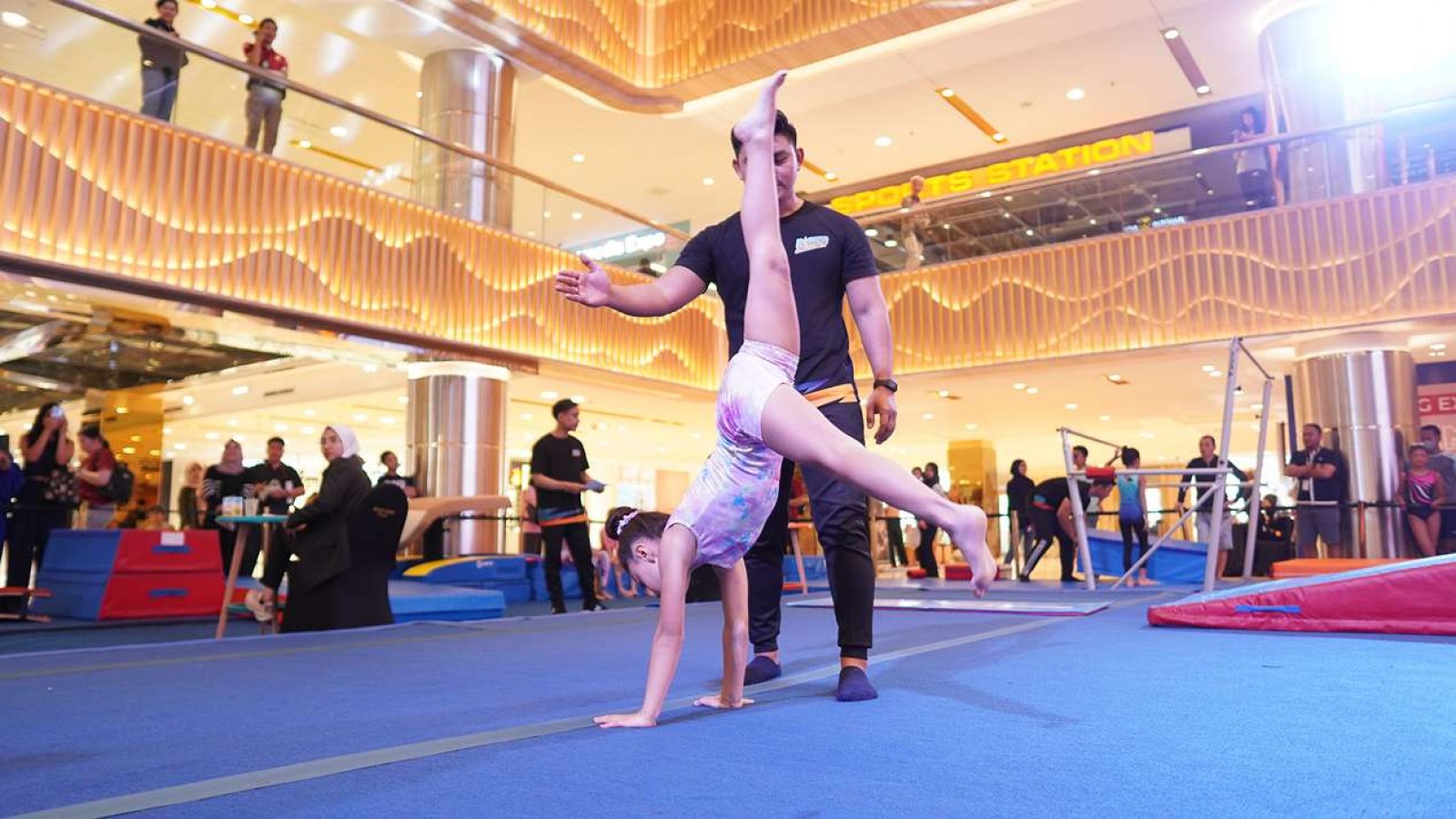Core Workout for Kids: Essential Exercises for Stability and Strength

Nowadays, screen time often surpasses playtime, and many children are experiencing a decline in core strength. Yet, a strong core is essential for a child’s overall development. It supports good posture, enhances balance, sharpens fine motor skills, and even boosts concentration.
To understand this further, this article will explore why core strength matters, how to recognize signs of a weak core, the common causes behind it, and practical exercises to help children build better core stability and strength. Let’s check it out!
What Is Core Strength?
Core strength refers to the ability of the muscles in the abdomen, back, pelvis, and hips to work together effectively. These muscles act as a central support system, enabling children to perform everyday activities such as sitting upright, walking, running, and even writing.
A strong core provides stability, balance, and coordination, forming the foundation for all movement and physical activity.
One exercise that is great for strengthening the core muscles is crossfit workouts for kids. Crossfit is a combination of various exercises and mostly involves functional movements.
Signs of a Weak Core in Children
Identifying a weak core in children can be challenging, but certain signs may indicate the need for intervention:
- Poor Posture: Slouching or leaning on desks while sitting.
- Fatigue During Activities: Tiring quickly during play or physical tasks.
- Balance Issues: Difficulty maintaining balance while standing or moving.
- W-Sitting: Preferring to sit with legs turned inward, forming a "W" shape.
- Delayed Motor Skills: Challenges with crawling, jumping, or throwing a ball.
- Avoidance of Physical Activities: Reluctance to engage in climbing or other active play.
- Frequent Complaints of Pain: Experiencing discomfort in the back, legs, or feet during activities.
Recognizing these signs early can lead to timely interventions, promoting better physical development and overall well-being.
Why Do Many Kids Have Weak Core Muscles?
You might notice that more and more children today struggle with things like sitting upright for long periods, balancing during play, or even simple physical tasks. One common reason? Weak core muscles.
But why is this happening? Let’s break down the key reasons:
1. Sedentary Lifestyle
One of the biggest reasons kids have weaker core muscles today is because they’re simply not moving enough. Screen time has taken over many parts of daily life. Whether it’s watching cartoons, scrolling on tablets, or playing video games, children are spending a lot of time sitting still.
While these activities can be fun and sometimes educational, they don’t help build the core muscles the way climbing, jumping, running, or even crawling do.
2. Academic Demands
As children enter school, they are expected to sit for long periods in classrooms. They often go from sitting at school desks during lessons to sitting again while doing homework at home.
Unfortunately, schools may not always provide enough physical breaks or movement throughout the day. Without regular chances to stretch, move, or play, kids can lose core strength over time.
Sitting still for hours also increases the likelihood of slouching, which puts extra pressure on the back and weakens abdominal muscles. This constant sitting without movement can have a long-term impact on their posture and strength.
3. Reduced Outdoor Play
Another major factor is the decline in outdoor play. In the past, it was common for children to spend hours outside—climbing trees, running through parks, playing hide and seek, or exploring nature.
Today, many kids have limited access to safe outdoor areas or live in places where there simply aren’t enough open spaces. Some parents also feel hesitant to let their kids play outside unsupervised.
As a result, children miss out on the kinds of active play that naturally build core strength. Activities like swinging, balancing on playground equipment, and jumping from rocks all contribute to stronger core muscles, but fewer children are doing them regularly.
4. Developmental Delays or Medical Conditions
In some cases, children may have medical or developmental conditions that affect their muscle growth and coordination. For example, kids with low muscle tone (a condition called hypotonia) may struggle to sit up straight or keep their balance during everyday activities.
Children with conditions such as cerebral palsy, developmental coordination disorder (DCD), or sensory processing issues may also face challenges with movement and muscle development.
These children often require special exercises or physical therapy to build core strength, as they may not naturally gain it through play like other children do.
Core Strengthening Activities for Kids
Incorporating fun and engaging exercises into a child's routine can effectively improve core strength and be effective for children. Here are some recommended activities:
1. V-Ups
Have your child lie on their back with their legs extended, then encourage them to lift both their legs and upper body at the same time, reaching toward their toes. This movement helps strengthen the abdominal muscles and improves coordination.
2. Bridges
Have your child bend their knees with feet flat on the floor, then lift their hips upward to form a straight line from their shoulders to their knees. This exercise enhances gluteal and lower back strength.
3. Superman Pose
Have your child lie face down and lift their arms, chest, and legs off the ground at the same time, pretending to fly like a superhero. This fun movement strengthens the back muscles and improves posture.
4. Tall Kneeling Ball Toss
While kneeling, have your child toss a ball overhead to a partner or a target. This activity enhances balance and engages the core muscles.
5. Animal Walks
Encourage your child to imitate animal movements like bear crawls or crab walks. These playful actions promote coordination and build full-body strength.
6. Wheelbarrow Walks
Hold your child's legs while they walk forward on their hands. This classic wheelbarrow walk strengthens the arms, shoulders, and core muscles.
7. Squats
Have your child stand with their feet shoulder-width apart and perform squats by bending their knees and lowering their hips. This exercise builds lower body and core strength.
Build Your Child's Core Muscles With Rockstar!
Core strength is essential for children's overall health and physical development, as it supports posture, balance, and movement. Weak core muscles can hinder a child's ability to perform daily activities and engage in sports effectively.
With many kids experiencing weak core muscles due to inactivity or improper posture, it's crucial to incorporate exercises that strengthen these muscles.
As the best Sports & Performing Arts programs, Rockstar Academy is here to help children build and improve their core strength through engaging and fun Rockfit programs.
By participating in these specialized programs, kids will not only enhance their physical abilities but also boost their confidence and performance in various activities.
Additionally, for kids who love a challenge and enjoy competition, Rockstar Academy offers exciting events like RockOlympics, where they can showcase their skills and push themselves to the next level.
For those who prefer more focused learning, Rockstar also provides Private Instruction—a personalized, skills-based training program designed around each student’s individual needs and goals.
In this one-on-one setting, students benefit from intensive training sessions, real-time feedback and guidance from experienced instructors, and regular progress reports with training videos.
They’ll also receive weekly practice exercises to do at home, helping them stay on track and grow even faster. Best of all, you can try a free trial class first to see if it’s the right fit!
FAQ
At what age should children start core strengthening exercises?
Core strengthening can begin in infancy with activities like tummy time. As children grow, exercises can be adapted to suit their developmental stage, typically becoming more structured around age 4.
How often should my child perform core exercises?
Incorporating core exercises 2-3 times per week is beneficial. Consistency is key, and integrating activities into daily play can enhance results.
Are there any risks associated with core exercises for kids?
When performed correctly and under supervision, core exercises are safe. It's important to ensure proper form and avoid overexertion.
What if my child resists doing these exercises?
Making exercises fun and incorporating them into games can increase willingness. Offering choices and involving peers or family members can also boost participation.
Why do many kids today have weak core muscles?
Many kids spend more time on screens and less time playing actively. This leads to less movement and fewer opportunities to strengthen their core muscles. Sitting too much, fewer physical education classes, and developmental delays can also contribute.



